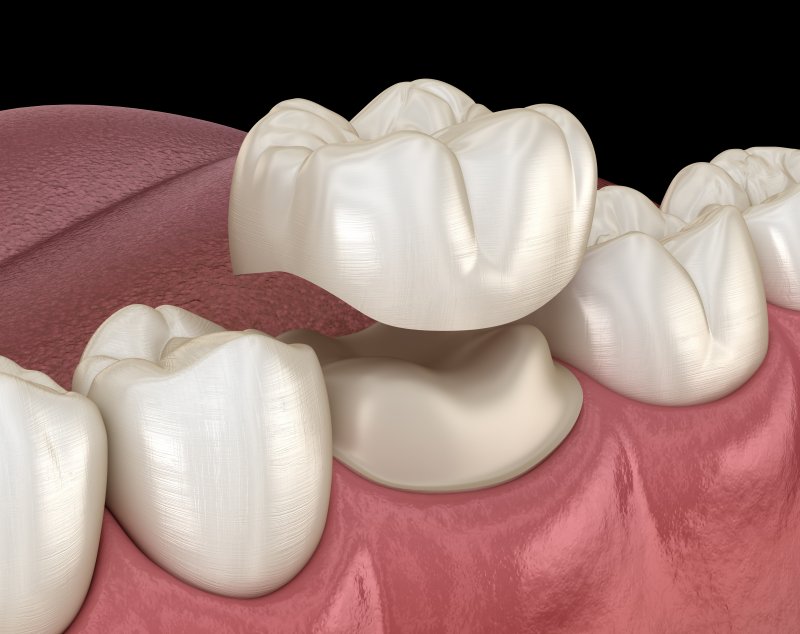
You recently received your new dental crown, and you realize it is in your best interest to protect it, keep it clean, and avoid causing damage to your new smile. Although this type of treatment is partially covered by dental insurance, you don’t want to face the reality of needing a new one sooner rather than later. So what can you do? Here are three tips to consider when attempting to extend your dental crown lifespan and enjoy a healthier, longer-lasting smile.
Brush, Floss, Rinse
Three of the most common components of any good oral hygiene routine are brushing, flossing, and rinsing. Using a soft-bristled toothbrush and fluoride toothpaste, you should brush your teeth twice a day for two minutes each time. This will remove bacteria and food particles from your teeth, keeping them healthy and better protected against cavities. But you should also remember to floss using either traditional waxed floss or a water irrigator. This will get between your teeth to remove any harmful particles that might exist and cause gum disease. Lastly, rinsing with an ADA-approved mouthwash can help to eliminate any remaining debris that might have been missing while brushing and flossing.
Simply remembering that you must be careful when cleaning around your dental crown, as you don’t want to cause it to detach from the underlying tooth.
Stay Away From Hard, Chewy, and Sticky Foods
The foods you eat will greatly impact how long your dental crown will remain in place. Hard candies, caramels, gum, and even chewy treats can be some of the worst things you can consume when living with a customized restoration. The reason is that these foods can damage (chip, crack, or break) or pull your crown. If it detaches from its position, your underlying tooth will immediately become vulnerable to further decay.
By passing on these options, you’ll get to enjoy your existing restoration for longer and avoid the time and cost that is required when having a new one made.
Continue Seeing Your Dentist
Keeping your six-month dental checkups and cleanings is important. Not only will your dentist need to check and make sure that tooth decay and gum disease are not forming throughout the rest of your mouth, but they will examine your crown to ensure it is fully intact. Any possible damage or hint of decay that might be forming on the underlying tooth must be treated right away to avoid more extensive and costly restorative care.
Don’t let the idea of living with a dental crown keep you from enjoying the finer things in life. By following these simple tips, you can spend less time seeing your dentist for emergency assistance and instead, embrace new opportunities and functionality thanks to a secure and stable dental restoration.
About the Author
Dr. Douglas Baldwin and the team at Foundation Dental Solutions want your dental visits to be easy and successful. We also want you to get the most out of your customized restorations. Because these crowns can be costly and require ample time to create, we will offer tips and suggestions to help you better maintain your new teeth so that they will look healthier and last longer. Contact us at (817) 478-4300 to learn how we can better assist in your oral healthcare journey.
